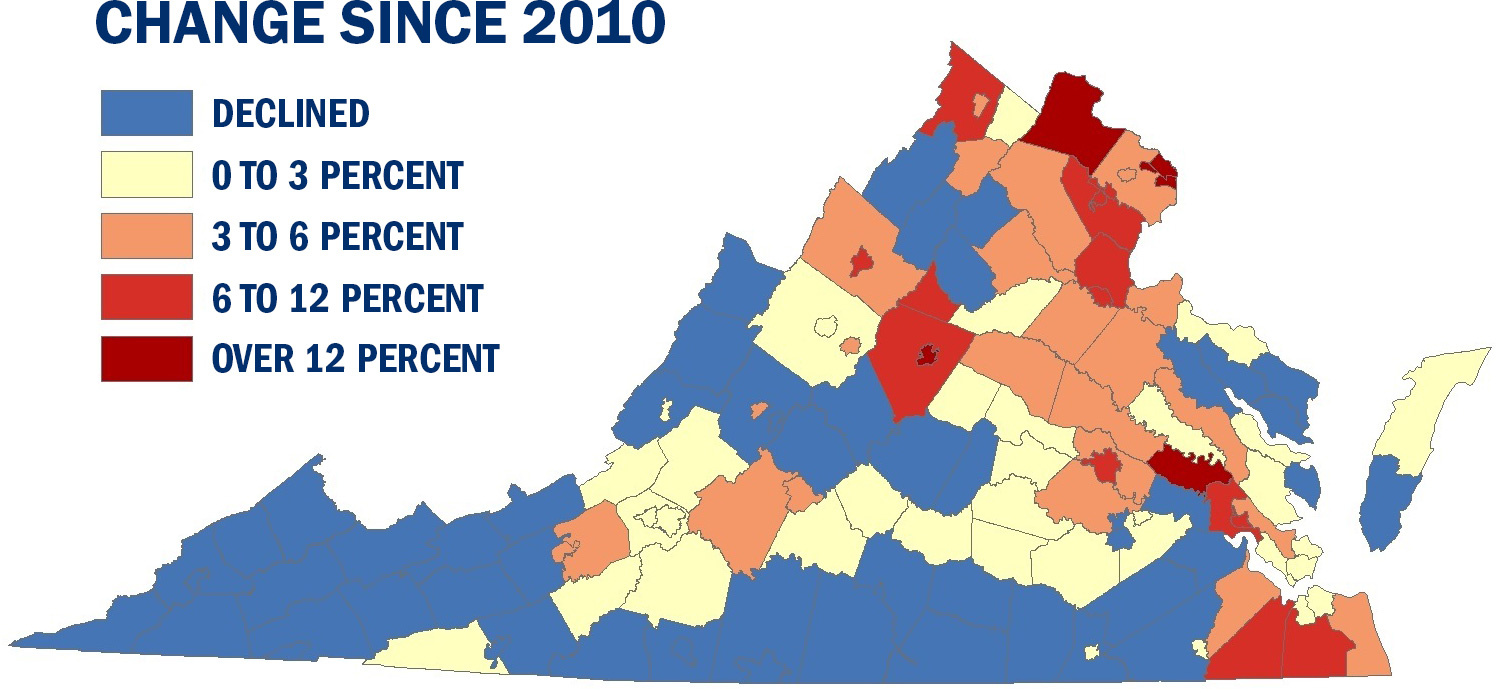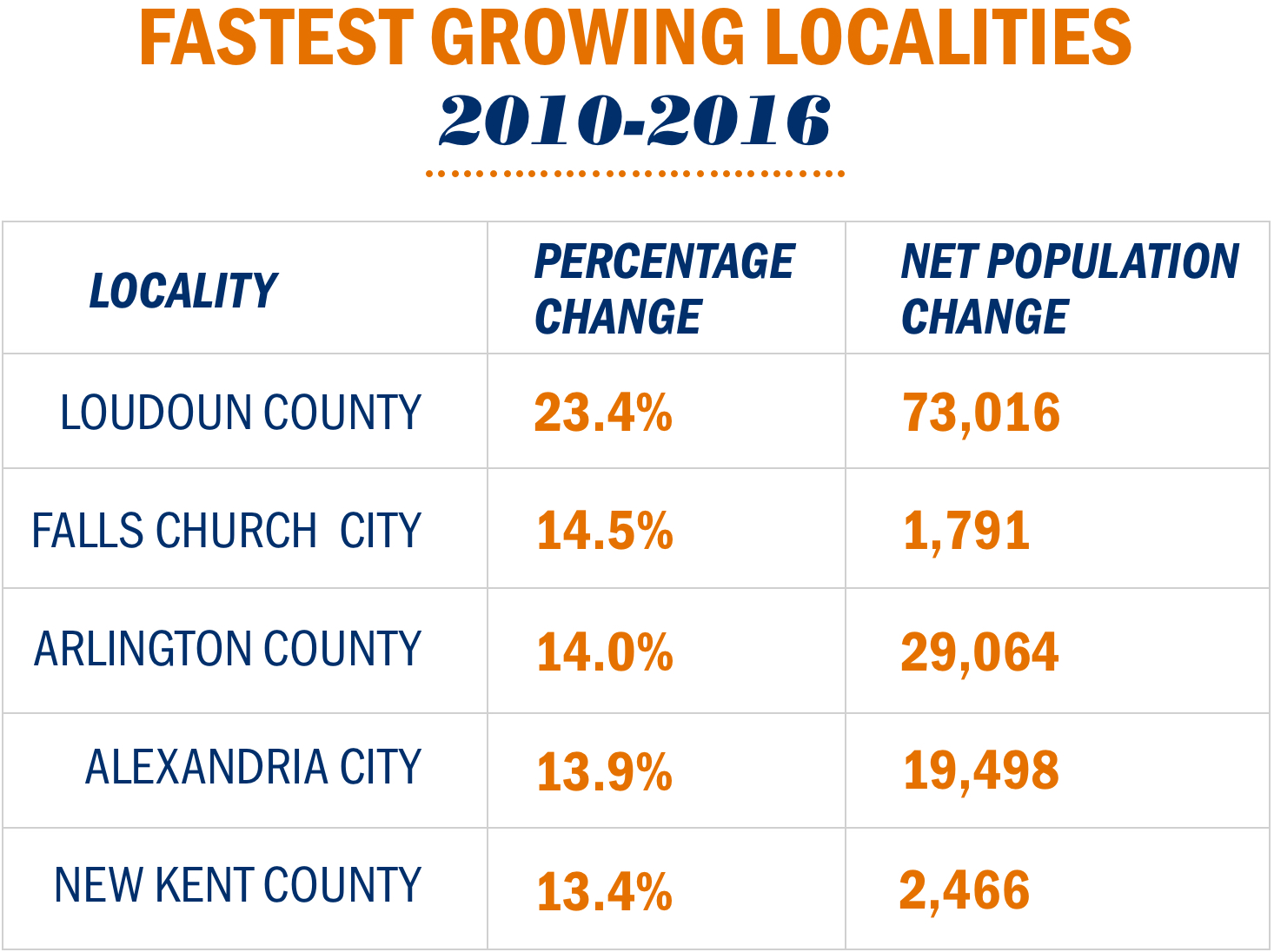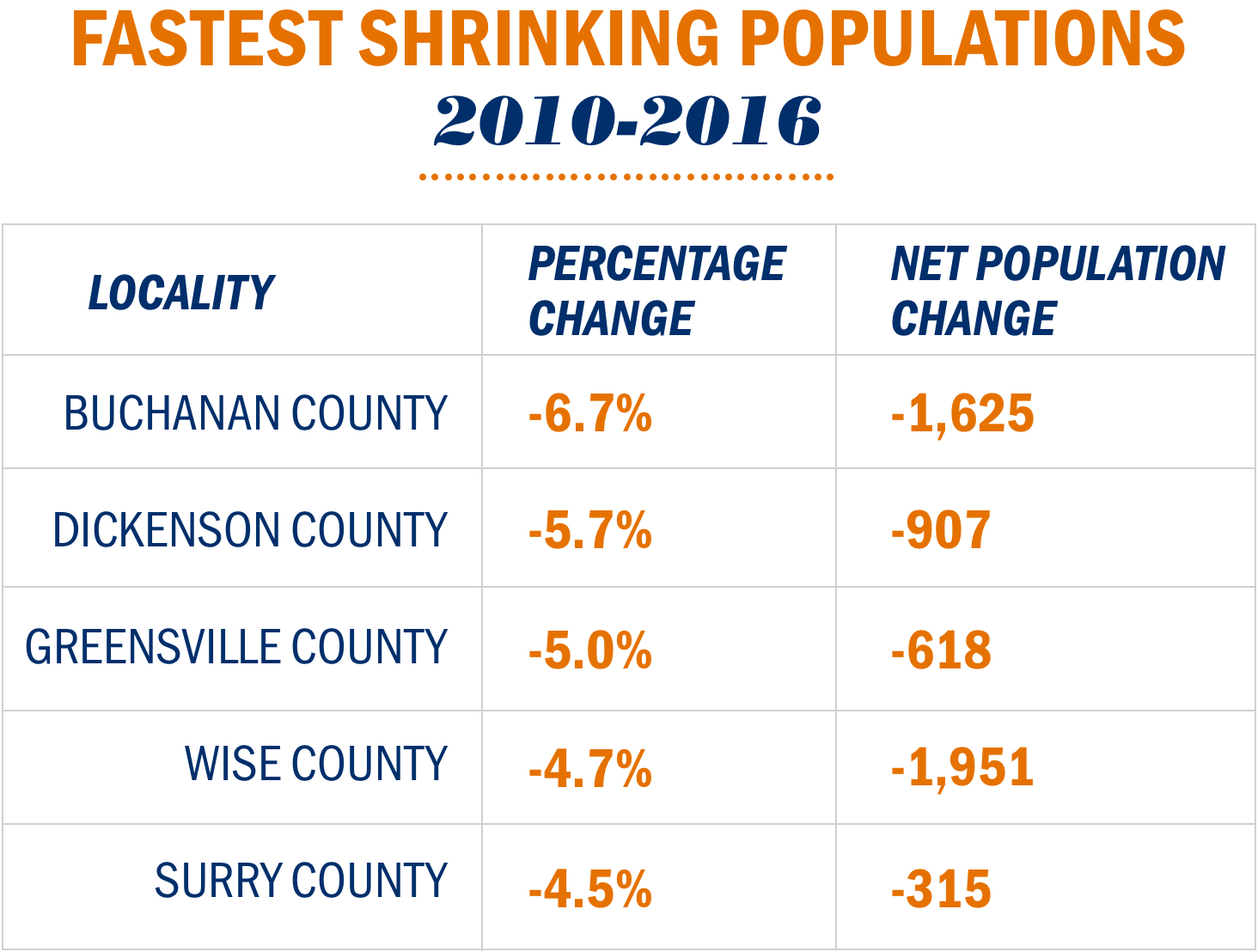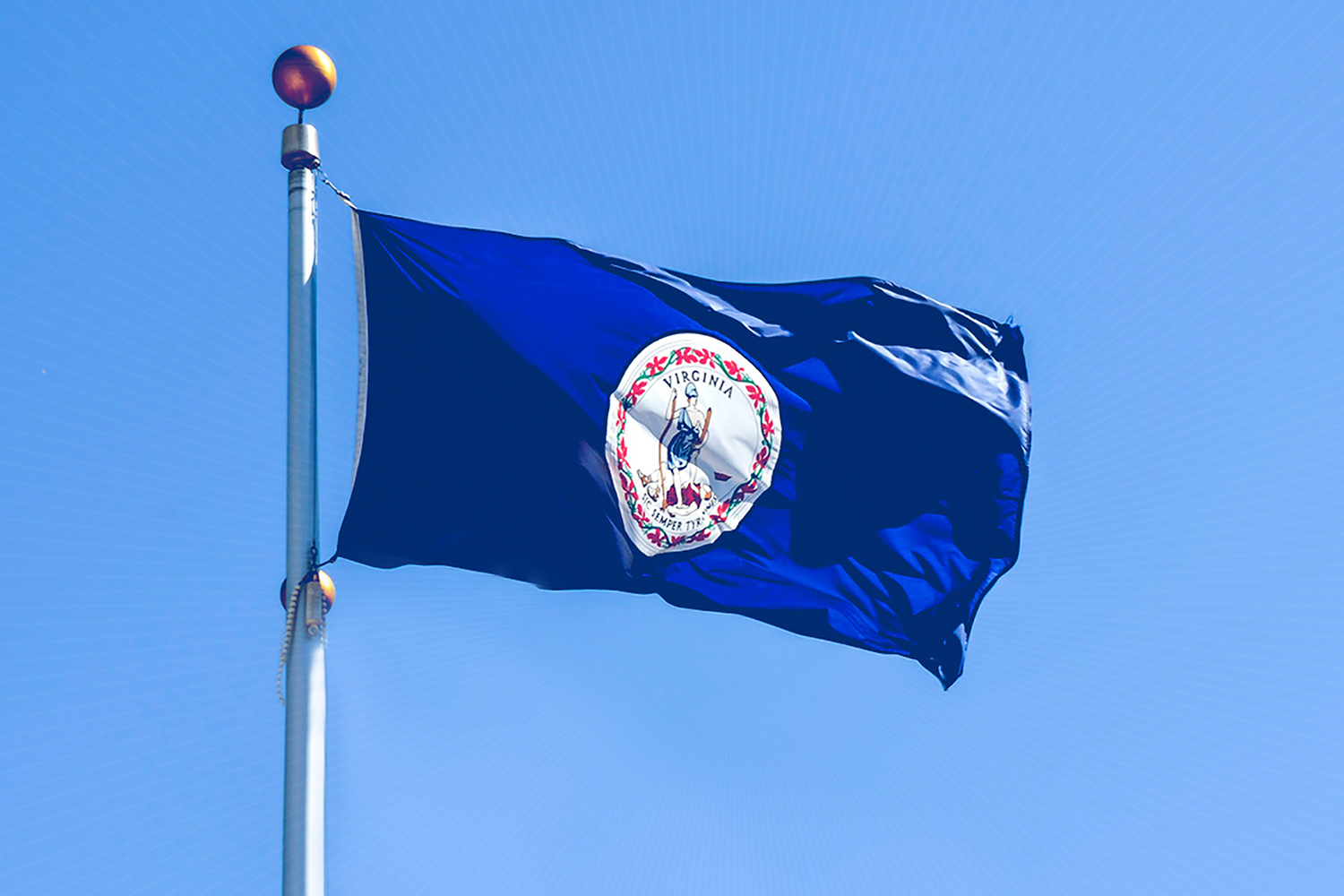Virginia’s population growth has steadily slowed since the 2010 census, with 90 percent of growth concentrated in its three largest metropolitan areas, according to University of Virginia demographers.
UVA’s Weldon Cooper Center for Public Service produces the official annual population estimates for Virginia’s cities and counties.
Since the 2010 census, Virginia grew by 5.1 percent, reaching an estimated 8.4 million residents on July 1, 2016. The commonwealth grew faster than the nation as a whole, which grew by 4.7 percent in the same period. Compared to other states, Virginia was the 19th-fastest growing state and had the ninth-largest numerical population gain.
In recent years, Virginia’s population growth has slowed significantly, matching national and regional trends. Fewer people moving into Virginia has contributed to the slower pace of growth. For the past three years, more people have moved from Virginia to other states than have moved into the commonwealth.

The colored-coded map indicates localities that have declined in population since 2010 and shows the range of increase for those that have added to their population in that time period.
“Though the federal budget sequestration has likely contributed to the slow growth, most mid-Atlantic and Northeastern states have also experienced a rise in out-migration as more of the baby boomers reach retirement age,” said Hamilton Lombard, a research associate who prepared the population estimates. “Popular retirement states, such as Florida and South Carolina, have seen their population growth accelerate in recent years.”
Within Virginia, population gains have been concentrated in the Northern Virginia, Richmond and Hampton Roads metropolitan areas. Northern Virginia alone has accounted for more than 60 percent of the commonwealth’s growth during the past six years.
The Charlottesville Metropolitan Area’s population grew by 6.3 percent since 2010, outpacing statewide population growth rates.

Above are the top five Virginia localities ranked by percentage of growth.
Outside of Virginia’s largest metropolitan areas, the slowdown in population growth has been noticeable. Since 2010, three of Virginia’s eight statistical regions – Eastern, Southside and Southwest – have declined in population. Between 2010 and 2016, 45 of Virginia’s 95 counties declined in population.
Though out-migration has lowered population growth in Virginia, the commonwealth’s aging population also reduced population growth or in many cases caused it to decline. After falling during the recession, annual births in Virginia have remained lower than a decade ago. At the same time, the number of deaths in Virginia has risen 10 percent in the past five years, largely due to an older population.

Above are the five localities with greatest percent decrease in population.
“The trend toward population growth in Virginia’s urban areas, while many of its rural communities’ populations decline, is not new,” said Qian Cai, director of the center’s Demographics Research Group. “However, the deepening polarization of these demographic trends present growing problems for the commonwealth in terms of schools, housing, transportation, workforce and health care. Localities and regions will need to understand the trends in their community’s population and make informed, practical policy decisions to address these demographic changes.”
The Cooper Center’s population estimates are the official figures for the Commonwealth of Virginia. The estimates are based on changes since 2010 in housing stock, school enrollment, births, deaths and driver’s licenses. They are used by state and local government agencies in revenue-sharing, funding allocations, and planning and budgeting purposes.
To find your locality and view all of the 2016 population estimates for Virginia’s counties and cities, click here.
Media Contact
Article Information
January 30, 2017
/content/virginias-population-growth-slow-still-ahead-national-rate-0

